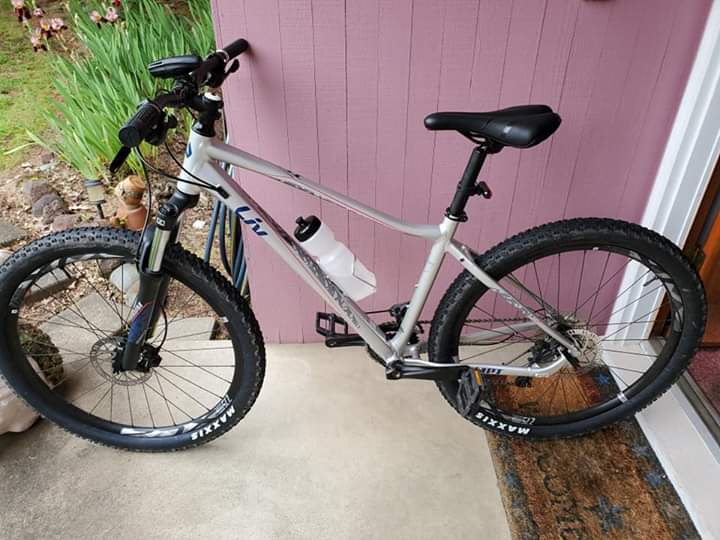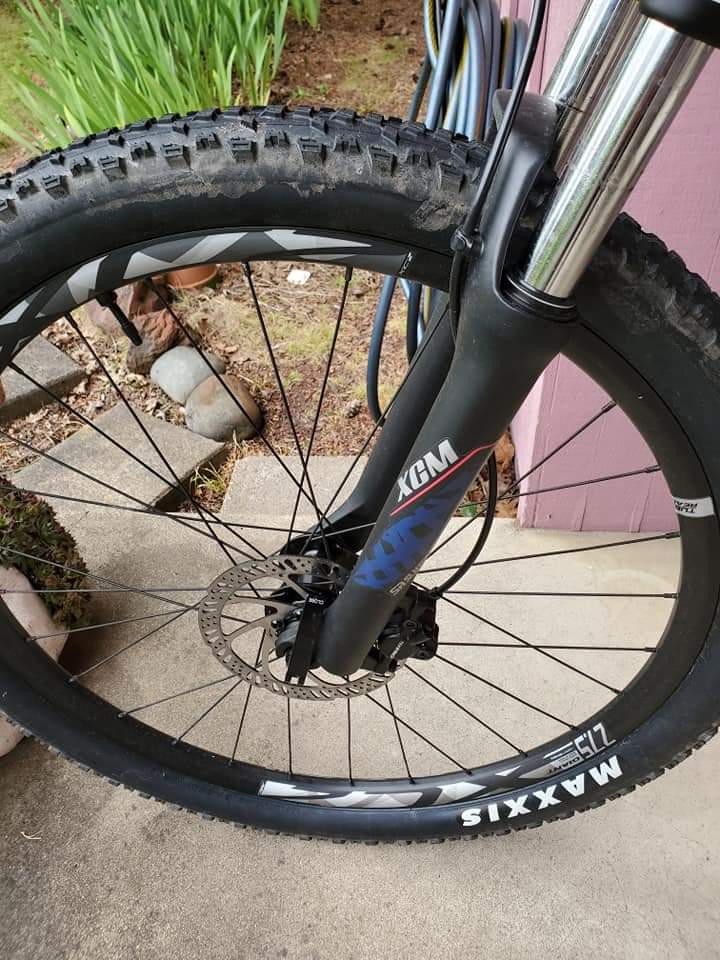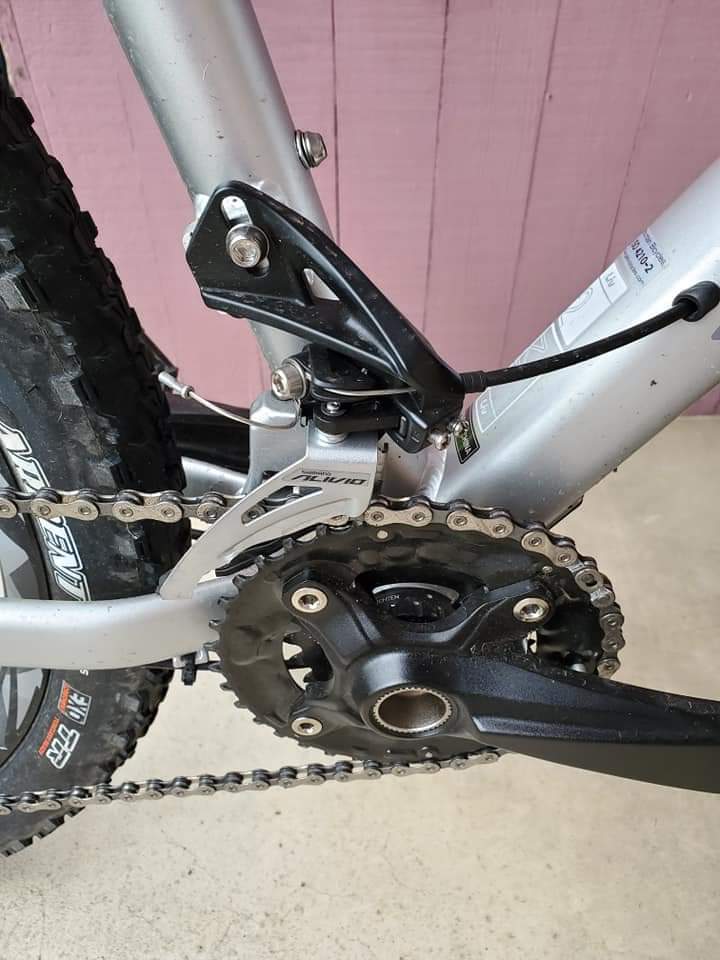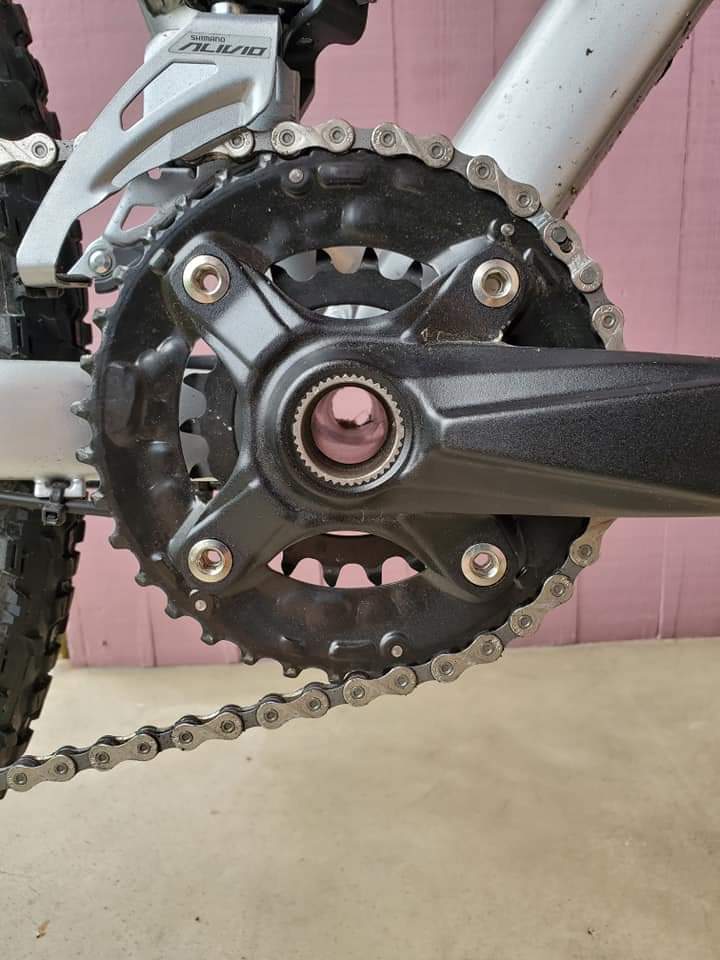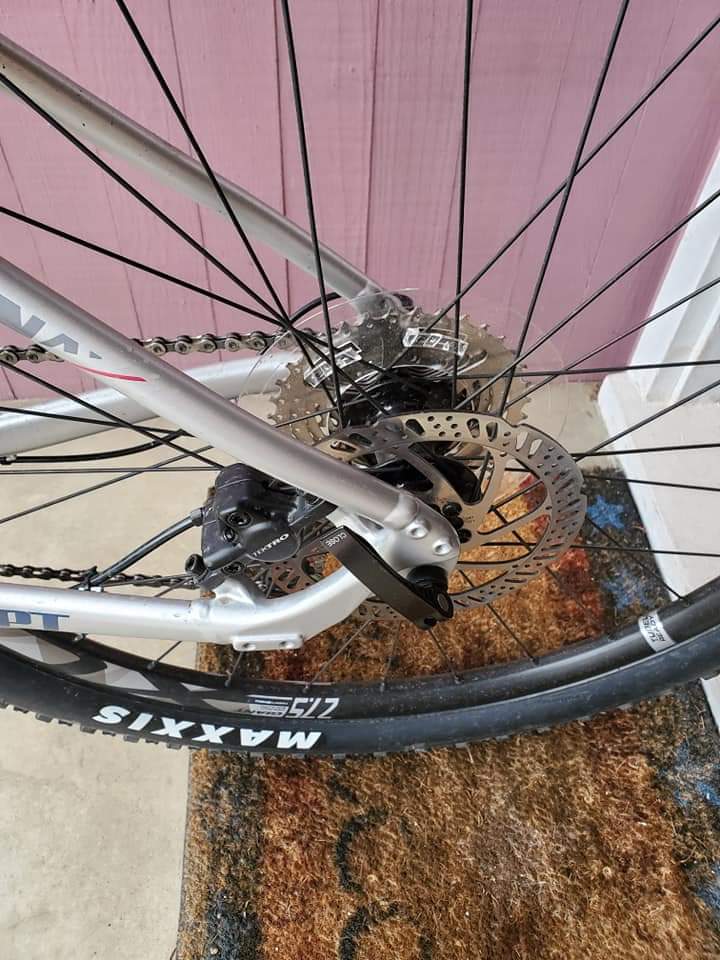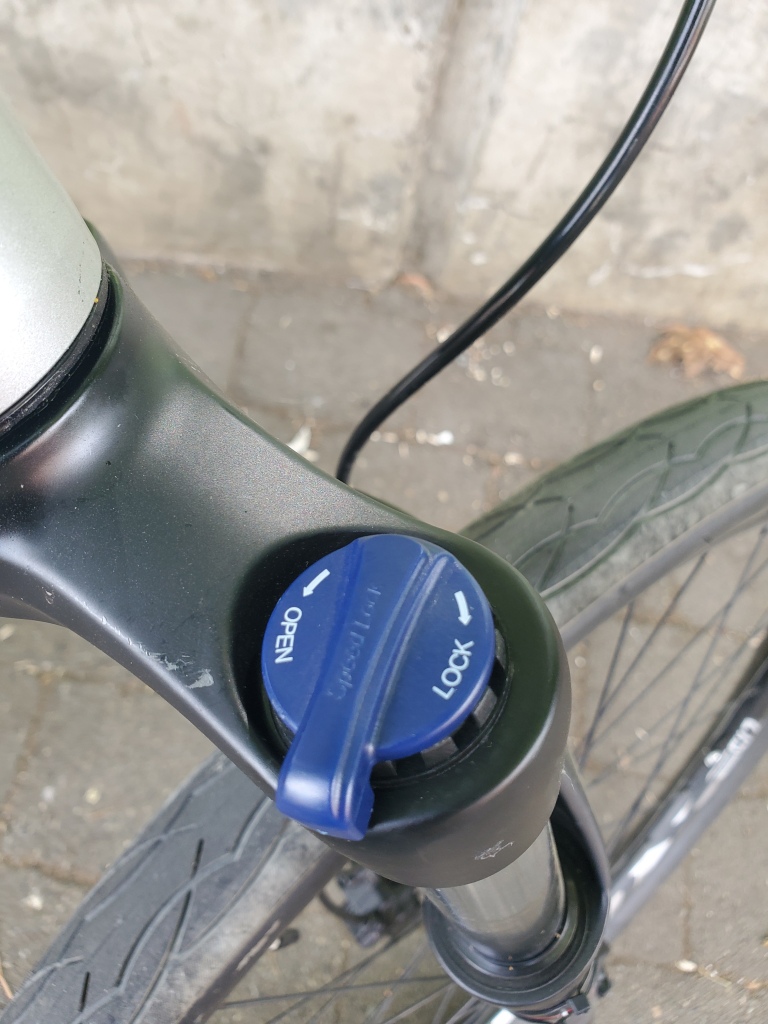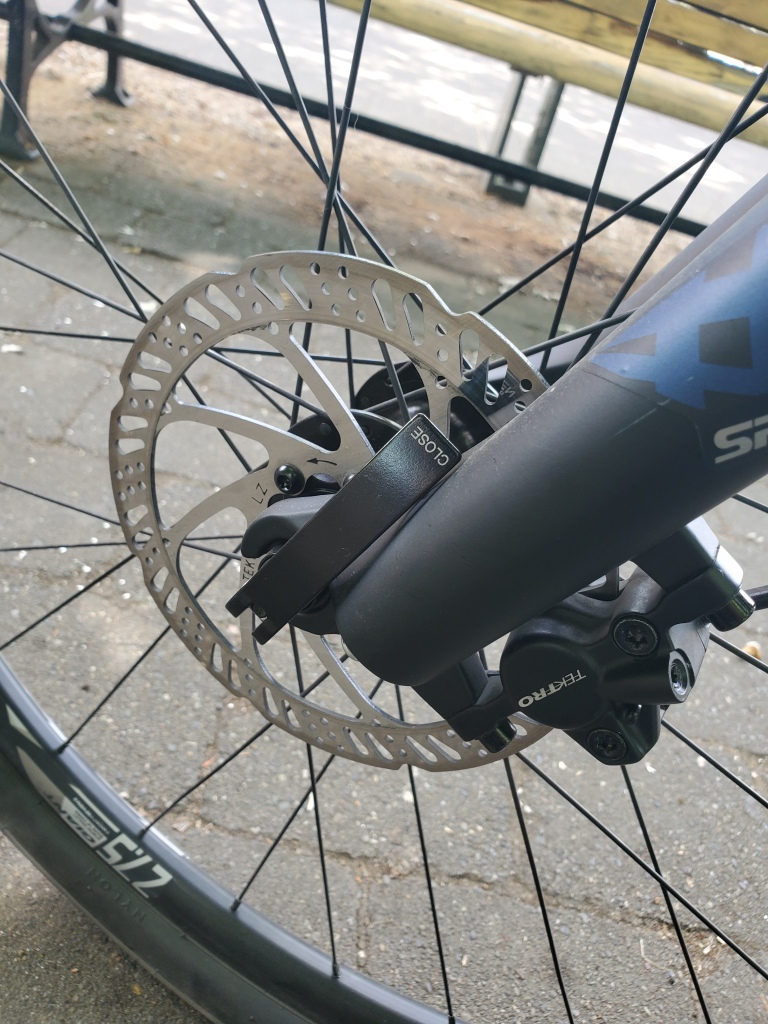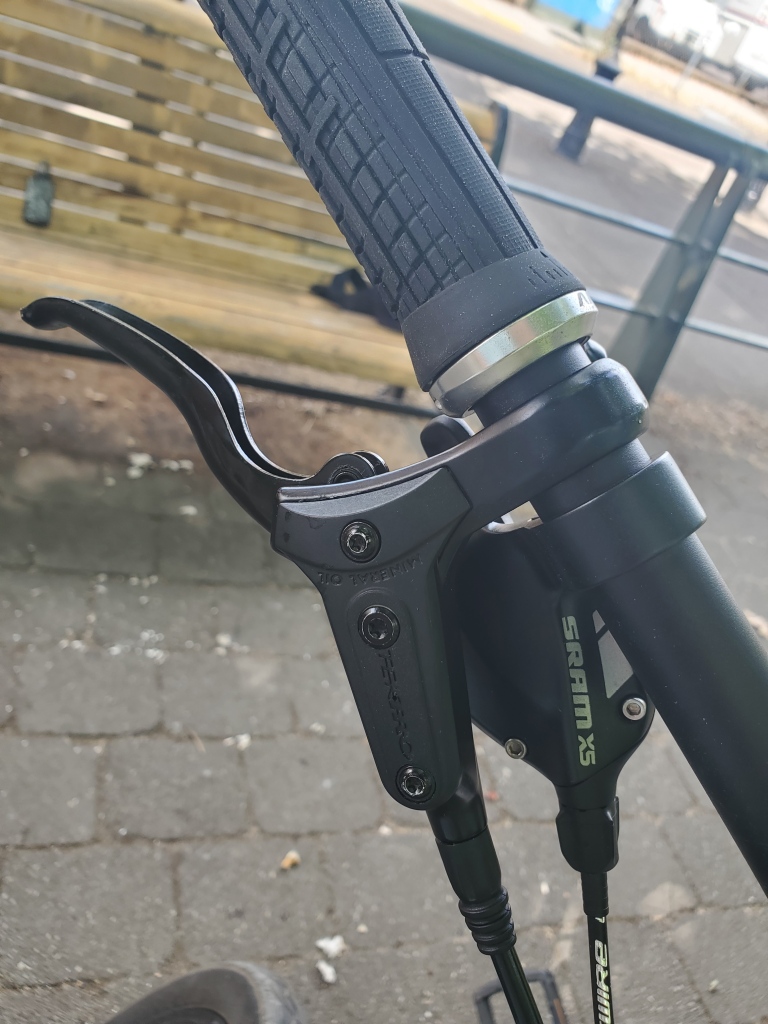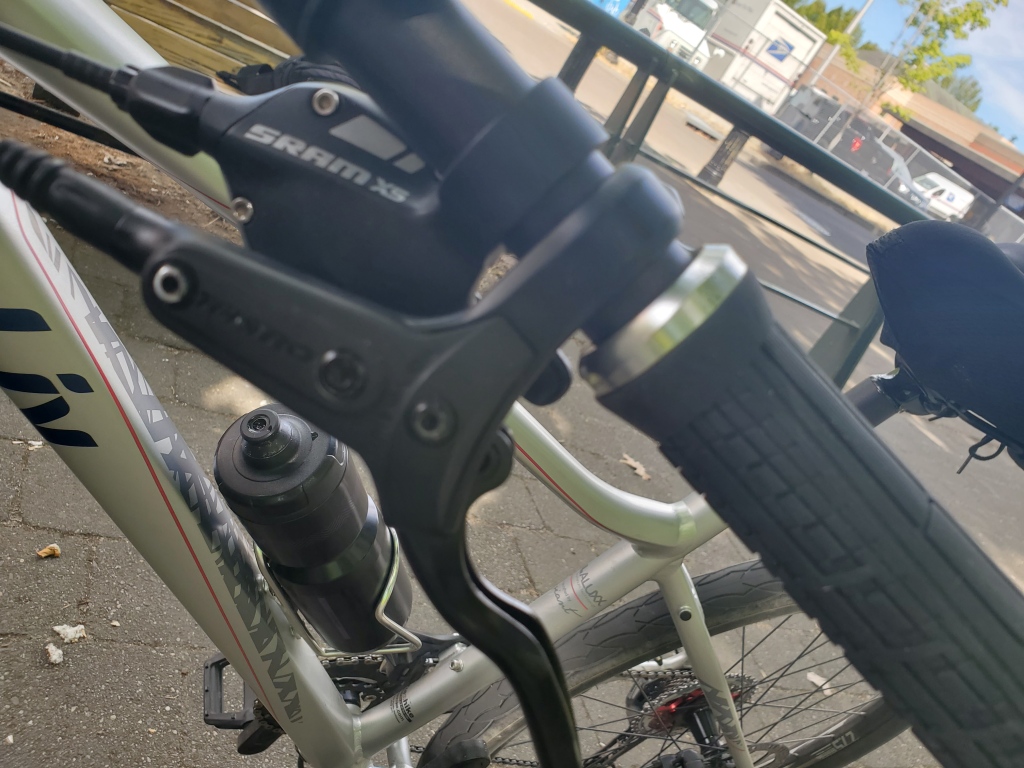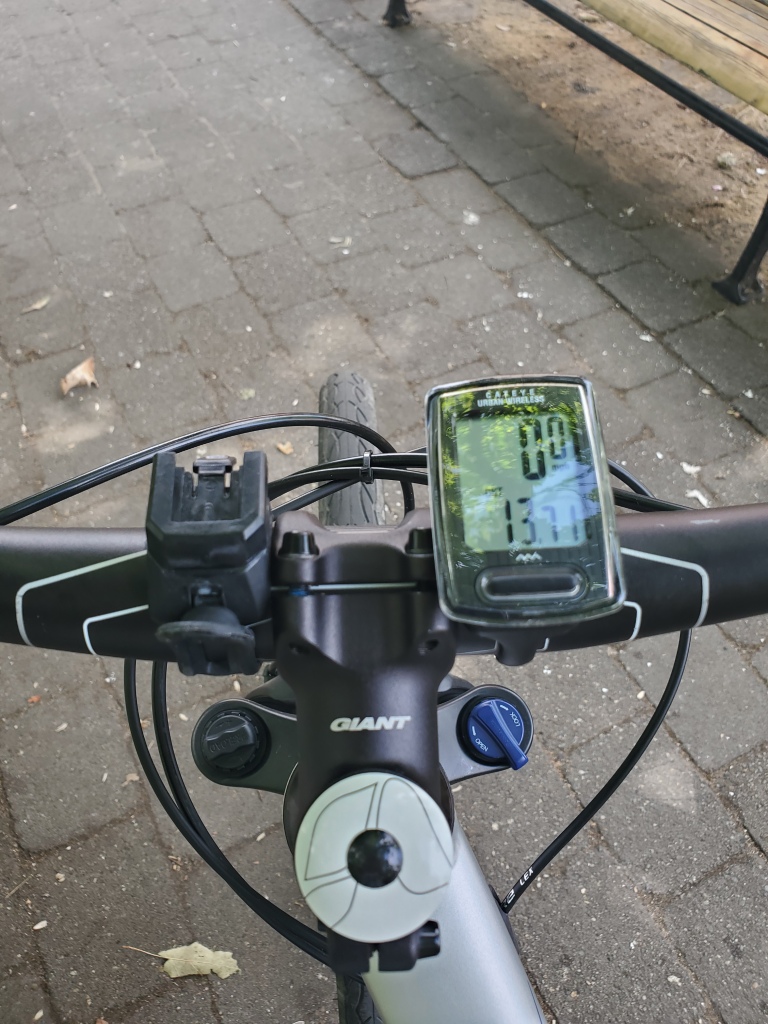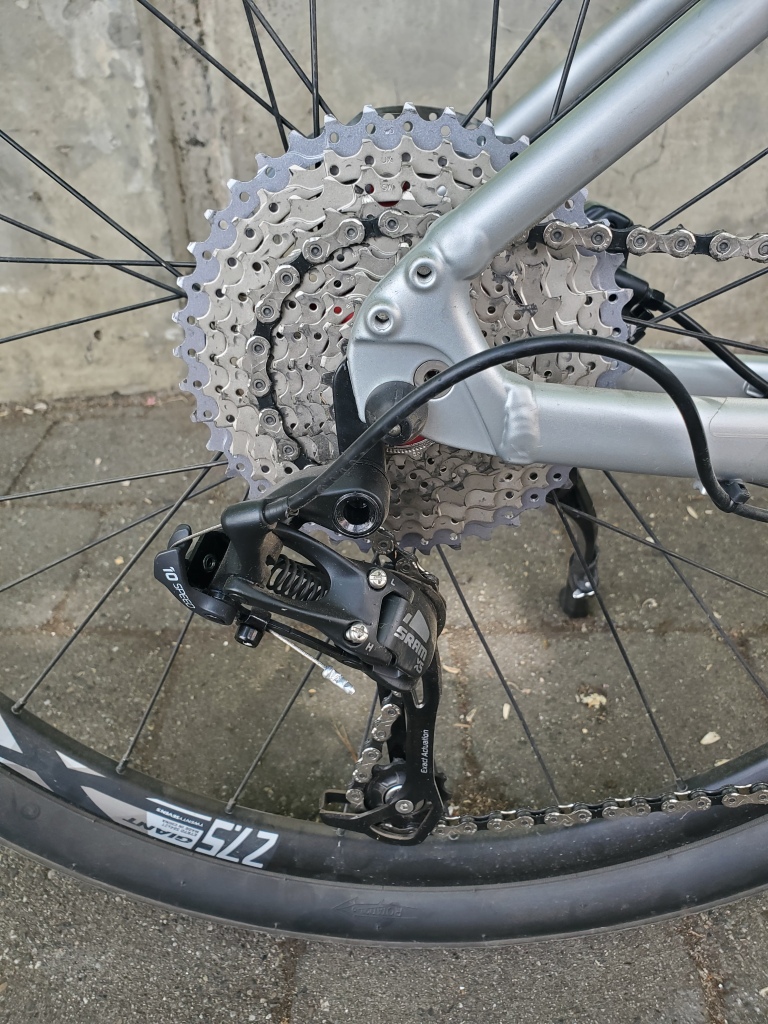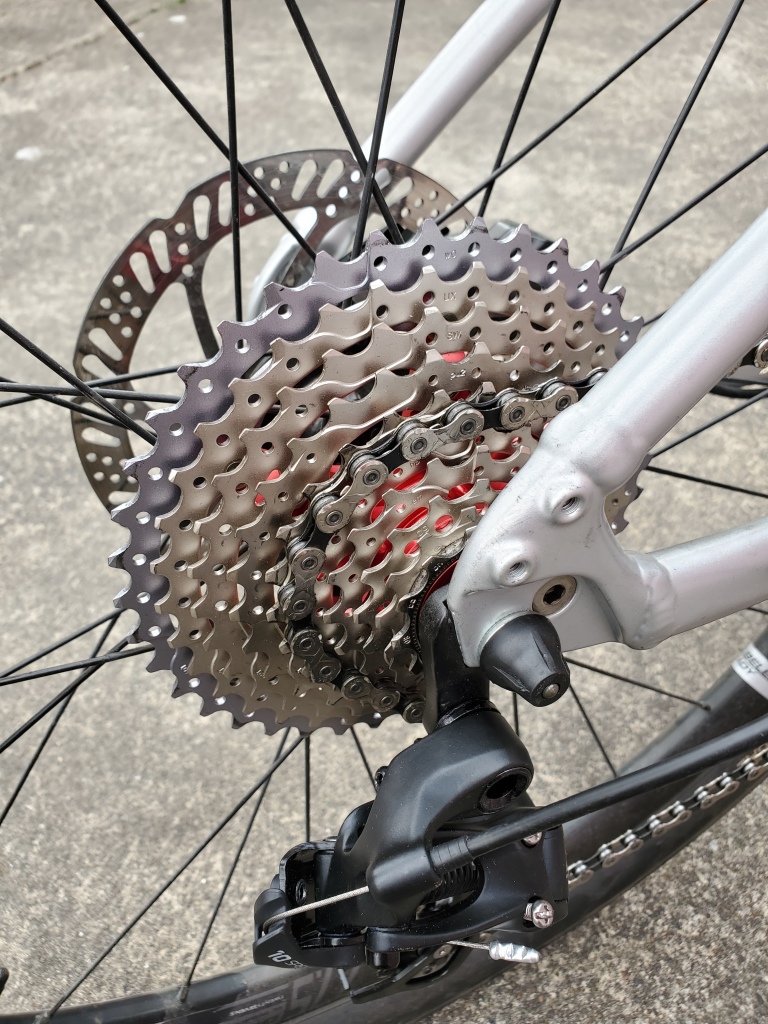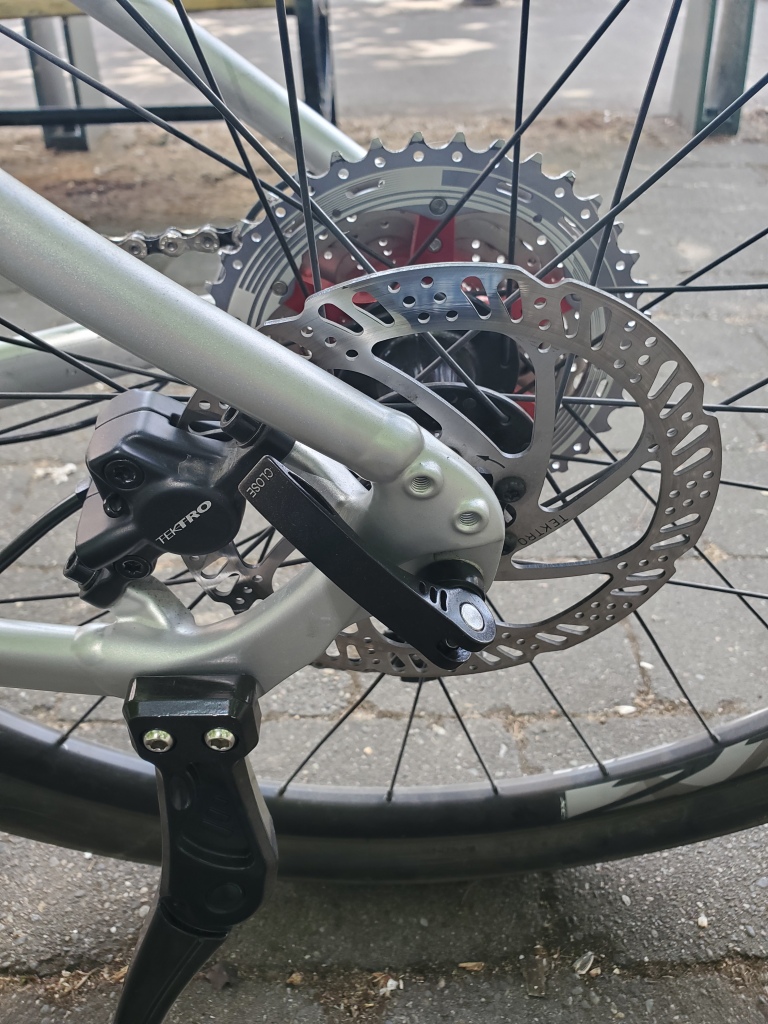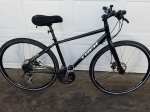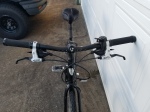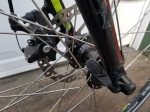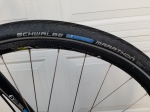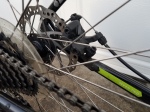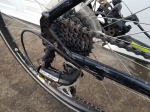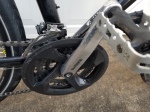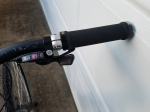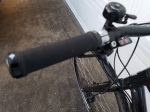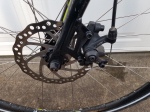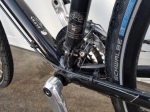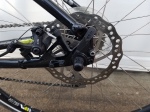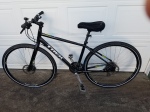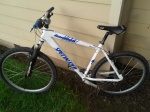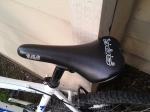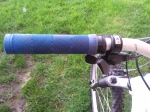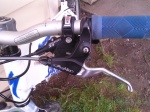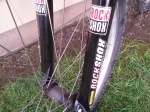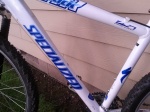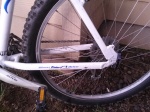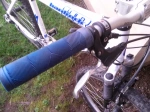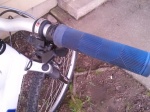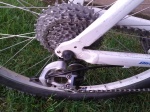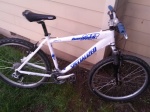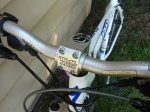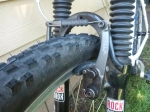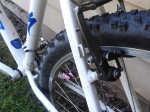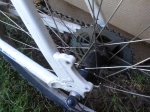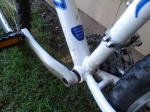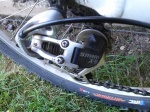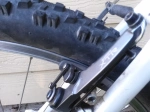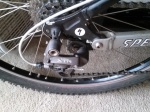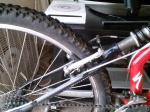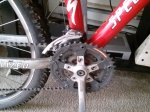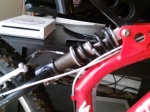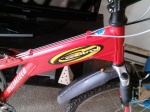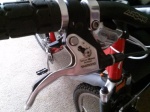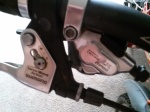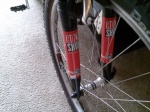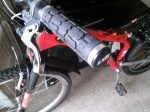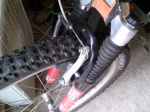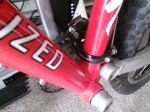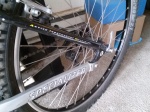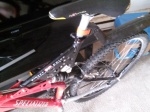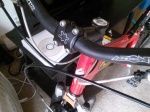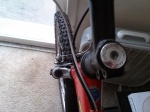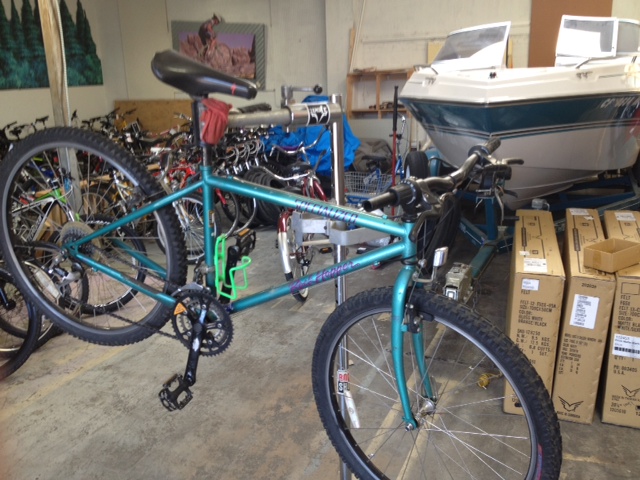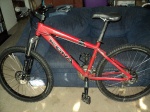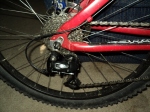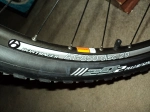So it has been a very long time since I wrote on my blog so I figured a bike review was something I could do for my readers. This year I choose to get a new bike around mid-may. I ended up with a 2019 Liv Tempt 2, made by Giant. Liv is Giant’s in house women’s bicycle line. Since I have a really short inseam the bike fits me just fine.
First off, the parts list:
- Frame – Giant “Aluxx” aluminum, 16” size, disc only, internal cable routing
- Fork – SR Suntour XCM, 100mm (4”) travel, hydraulic lockout equipped
- Brakes/Brake Levers – Tektro M275 hydraulic disc brakes
- Shifters – Shimano Acera 2X9 trigger shifters (Upgraded July 2020)
- Front Derailleur – Shimano Alivio side swing direct mount FD
- Rear Derailleur – Shimano Deore Shadow RD (Upgraded July 2020)
- Crankset – Prowheel RAID 501TT double crankset – 22t, 36t
- Bottom Bracket – Prowheel external BB
- Chain – KMC X9 9 speed chain (Upgraded July 2020)
- Cassette – Shimano CS-HG200-9, 11t-36t (Upgraded July 2020)
- Pedals – Giant resin anti-slip
- Seatpost – Giant Sport, 30.9mm
- Saddle – Liv Contact Comfort (Upgraded June/July 2020)
- Handlebar – Giant Connect Trail
- Grips – Liv Lock-On Grips
- Stem – Giant Sport, 6mm
- Headset – Giant
- Front hub – Giant Tracker Sport, disc only, 6 bolt
- Rear hub – Giant Tracker Sport, disc only, 6 bolt
- Rims – Giant XC2, 27.5 diameter, 28 hole, double wall, disc only, tubeless ready
- Tires – Maxxis Ardent, 27.5×2.25, tubeless (Upgraded June 2020)
Upgrades as of June 2020:
- KoMo street tires, 27.5×2.0
- Gel saddle
- Water bottle with steel cage
- Direct mount kickstand
- CatEye wireless bicycle computer
Upgrades as of July 2020:
- SRAM X5 2×10 shifters
- SRAM X5 rear derailleur
- Sunrace 12t-40t cassette
- KMC 10 speed chain
- Gel saddle cover
Frame and Fork:
The frame is your typical aluminum frame, hydroformed and bent in strange ways. Don’t really have a way to explain it, the pictures with have to do.. The frame features internal cable routing so it gives the bike a clean look but I can tell installing new shifter cable housing isn’t going to be any fun at all. I do like the fact that the brake hose for the back brake goes inside the frame, less of a chance of getting the hose damaged in some way. The bike also has the rear brake mounted inside the frame, to me this is a big deal, less chance to get it caught up on something and broke. I haven’t weighed the frame itself so I have no idea how heavy it is. I can say the butt end of the bike is overly heavy, but that might be due to the tire and tube along with the drivetrain and brake. The frame has the normal holes drilled out for fenders, rack, and two water bottles along with a kickstand mount. All though it looks dorky I have added a kickstand. The fork is SR Suntour XCM with 100mm (4 inches) of travel and is equipped with a turnkey lockout. Simply turn a dial to go from a fork that works to a rigid fork. I’m actually thinking of taking the fork off and replacing it with a rigid fork since I rarely go off road and ride it locked out 99% of the time. Makes no sense to lug around 5 pounds of fork I never use. I have noticed this fork isn’t the stiffest fork out there, it has some very light play when rocked back and forth while holding the front brake around where the uppers meet the lowers. Not too much, but enough to make me wish I had a different fork. Off road the fork does what it should and I have no complaints about the performance. One more inch of travel would help, it seems at my weight the fork gives me maybe 2” of useable travel. But, for the price, not a bad fork. I’ve had much worse.
Cockpit:
When I first purchased the bike the cockpit was made up of an extra long, low sweep bar with 2X9 Shimano Acera shifters, and Tektro hydraulic disc brakes. Over time I have added a bell for alerting people I am coming up behind them, a mount for my rechargeable front light, and a wireless bike computer. This is my second bike with an extra wide handlebar. At first it was tough getting used to having my hands so far apart, but over time I have gotten used to it, and now I prefer it. The stem is on the really short side so steering is rather quick and effective. The bike also came with Giant lock on grips, a plus for me since I love to tinker with my bike so taking the grips off is easy. As of July, 2020, I have upgraded the shifters to SRAM X5 2X10. These new shifter perform flawlessly and in my humble opinion work better than anything I have owned from Shimano. At one point I tried going to a slightly more narrow riser handlebar with more of an uprise but found that I preferred the wider bars.
Drivetrain:
The bike came with a Shimano 2X9 drivetrain. Shimano Acera 2X9 rapid fire shifters, Shimano Alivio side swing front derailleur, Shimano Deore shadow rear derailleur, and a 11-36 tooth 9 speed cassette. I rode this setup for about 2 months with zero issues. The drivetrain shifted smooth and fast. The only hiccup was shifting to the 30 tooth gear in the rear, sometimes the chain would not catch or would miss shifting to that one cog. The front derailleur is a side swing derailleur, seen on high end bikes a few years ago. It’s hard to explain, so just look at the pictures. Basically in swings in and out to shift the front chainrings instead of the traditional up and down movement. It’s quite effectice and I can say I’ve never had any issues with it using the 9 speed or ten speed chain. It just needs to be dialed in correctly. This is the first bike I have owned with an external bottom bracket setup. Basically the BB bearings sit on the outside of the frame in cups that thread into the frame versus the old school way of the bearings housed in a sealed unit that reside inside of the frame. It’s really cool to have a hollow bottom bracket, you can see right through it. Another plus is maintenance. I can remove the crank by loosening two pinch bolts and regrease the bearings without need of special tools. As of July 2020, I upgraded the drivetrain to a 2X10 setup. This gives me a better gear range and a taller climbing gear in the rear. I now have a 11-40 tooth 10 speed cassette. Fitting it on took some work, they say a 10 or 11 speed cassette will fit these Shimano based freehub bodies but I ended up using my old 11 tooth cog to get it all to fit due to the old 11 tooth cog being thinner than the new 11 tooth cog. I also swapped out the 9 speed trigger shifters for a set of SRAM X5 2X10 shifters along with a SRAM X5 rear derailleur. Once I had it all installed and dialed in, I noticed my rides have been a bit easier since I have more range to play with. I find SRAM shifters work better than Shimano shifters, due to the fact that SRAM works on a 1:1 actuation ratio versus Shimano’s 2:1 actuation system. In other words, SRAM shifters move shift quicker and are move faster. I also noticed that SRAM shifter have a more definite “click” than Shimano, to me that is more satisfying. I’ve never expired a mis-shift or ghost shift, even under heavy load. I would like my bike to be 100% Shimano free but since SRAM does not make direct mount front derailleurs, I will have to have at least one Shimano part on my bike for now.
Brakes:
The bike is equipped with the Tektro H275 hydraulic disc brakes and 6” rotors. I believe this is the fifth bicycle I have owned with hydraulic disc brakes. Nothing can compare to the power and modulation that comes from using this type of brake of a bicycle. Very powerful braking performance no matter what kind of riding I do or what kind of weather I’m riding in. A good trade off by using this brake system is the fact that I do not need to worry too much about keeping my rims trued because the brake system does no use the rim for braking. Being as heavy as I am, I truly as happy knowing I don’t need to true my rims up every other month. I get full stopping power using as little as one finger. I still have not learned how to bleed the brakes, that’s something I really need to learn so I can avoid trips to the bike shop and down time from the bike. For those that are curious, the brakes use mineral oil. My only issue with these brakes has been that they sometimes do not like to self center after a wheel removal and wheel installation. One pad will eventually start rubbing against the rotor. So I have to loosen the mounting bolts and center the pads. Not a big deal, it rarely happens. More expensive brakes do a fine job with self centering; these are a bit on the low end. But I feel for the price I paid for the bike, I got my monies worth.
Rims, Tires:
The rims that came with the bike are sturdy but not light. When I got the bike it was setup tubeless. However I wanted to take off the mountain bike tires and add on street tires since I ride mostly on pavement. Maybe I should have gotten a road bike. Anyhow, I added tubes when I installed the new tires. I believe the rims are double wall aluminum rims. 27.5 inch wheels. At first I wasn’t a huge fan of 27.5 inch wheels, I preferred 29 inch wheels, but over time I have come to enjoy the smaller size rims. I am hopeful they stay true for a long while, I’m not to good at truing rims nor do I have a truing stand so I would rather not have the bike in the shop for weeks and have to walk to work. The rear freehub is a bit on the loud side, but I really don’t notice it to much when I am out on a ride. Especially when I have the headphones on.
Upgrades
I already talked about the drivetrain and tire upgrades I installed in July of 2020. A few other things I have installed are a water bottle and cage, bike computer, a few things here or there. I haven’t ridden with a water bottle in years, I mostly used a hydration pack. Over time the backpacks full of water begin to hurt the shoulders so I went with a water bottle instead. The only downside is I can’t carry a spare tube, tools, and a pump with my while just using a water bottle. I am looking to invest in a under the seat storage solution to address that problem. The bike computer is a CatEye Urban Wireless computer. It tells the speed, distance, average MPH, highest MPH, and the time. It was a pain to get setup, but it works flawlessly. Of course I installed a new gel saddle and added even more gel with a gel saddle cover. Long rides over 30 miles still hurt the butt and backside but it’s far better than the really slim tiny saddle the bike came with where I had to rest every few miles because I got sore. And the kickstand might look goofy, but it has saved my bike from getting scratched while leaning it against things while I’m taking a break more times then I can count. I might take it off sometime in the future, not sure just yet.
Future Upgrades:
- New lighter wheelset that can work with a 11 or 12 speed cassette
- 1X11 or 1X12 drivetrain
- Remote lockout system for the fork
- Bar ends for long rides
Final Thoughts
Damn good bike for the price they ask. I paid a little over $700 for the bike. Considering it comes with a 2X9 drivetrain featuring a side swing front derailleur, shadow style rear derailleur, external BB setup, lockout on the fork, hydraulic brakes, internal cable management, and tubeless tires I would say you are basically getting a $1000 bike for the low price they ask. Giant is known to pack a lot of value into their bikes. I would recommend this bike for the person just getting into mountain biking and light cross country riding. In it’s stock setup it climbs well and descends well. However this isn’t a high end machine nor is it a high end downhill machine so for light off road riding and urban assault riding I think you can’t go wrong picking this bike up. And yes, the bike is worthy of upgrades.
-Stars-
Value for the money: * * * * * (5 out of 5)
Parts selection: * * * * (4 out of 5)
Fork: * * * * (4 out of 5)
Pictures of the bike before upgrading the drivetrain to 2X10:
Pictures of the bike after the 2X10 drivetrain upgrades:
